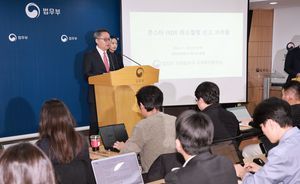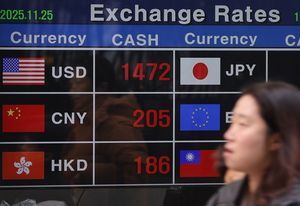
Logo of Chinese electric car company BYD ⓒ Newsis
Surprisingly, the Chinese electric car company BYD has targeted the Korean market. Considering that the market size is not large and that Hyundai and Kia’s market share exceeds 90%, this is unexpected, especially given the declining consumer preference for Chinese cars.
The industry believes BYD’s strategy is to use Korea as a stepping stone for exports to the U.S. and Europe rather than aiming for success in the Korean market. For this reason, the possibility of establishing a sales network and a production base in Korea is being considered.
According to industry sources, on the 8th, BYD plans to discuss certification with the Ministry of Trade, Industry, and Energy and the Ministry of Environment to sell electric passenger cars in Korea. They are hiring personnel for accreditation and have been steadily increasing their internal workforce since the end of last year.
Despite rapidly expanding to become the top global electric car seller in the past 2-3 years, the Korean market does not offer many advantages for BYD. This is due to the electric car market’s small size and Hyundai and Kia’s high market share.
Furthermore, BYD’s primary use of LFP (lithium iron phosphate) batteries for cost competitiveness is a disadvantage in the Korean market. This is because the Ministry of Environment has revised the electric car subsidy system this year to provide less support for batteries with low recycling values. LFP batteries are a typical example of a battery with a low recycling value. If BYD’s cars enter Korea, they will inevitably face a handicap regarding subsidies.
Despite these challenges, BYD’s entry into the Korean market is interpreted as a strategy targeting markets beyond Korea. The main goal is not to sell many vehicles to Korean consumers and make a profit.
The likelihood of BYD using Korea as an export base is highly anticipated behind its entry into Korea. This is because major global countries, including the U.S. and Europe, have raised tariff barriers on Chinese electric cars. The U.S. imposes a tariff of 27.5% on Chinese electric cars, and Europe is also considering imposing additional tariffs on top of the existing 10%.
On the other hand, Korea has free trade agreements (FTAs) with most countries in Europe and the U.S., allowing it to avoid tariff barriers. Given that BYD needs to continue its sales in the U.S. and Europe, known as global automotive battlefields, Korea is considered attractive.
Professor Kim Pil Soo of Daelim University’s Automotive Engineering Department said, “Korea has the most FTAs, and because BYD currently faces high tariffs in the U.S. and Europe, there is a high possibility of using Korea as an export base. They can’t sell in the large U.S. market. The economic conflict between the U.S. and China is likely BYD’s biggest concern, and they may use Korea as a gateway.”
In response, it has been reported that BYD is looking for a site to produce or semi-assemble (CKD) vehicles in Korea in line with its entry into Korea. This is because they can only label their exports as “Made in Korea” if they are produced domestically. Previously, Polestar, an electric car brand under China’s Geely Group, also agreed to make the Polestar 4 for North American exports and Korean sales at the Renault Korea Busan factory by 2025.
The industry predicts that BYD could purchase the old GM Gunsan factory or establish an electric car factory in North Chungcheong.
An industry insider said, “They are considering establishing an electric car factory in North Chungcheong. The old GM Gunsan factory is also fully equipped and idle so that they could purchase and modify it. If their goal were domestic sales, they wouldn’t have even considered production in Korea.”
If they produce in Korea, they can remove the “Made in China” label and alleviate concerns about quality. This is a significant advantage as domestic consumers still have considerable concern and resentment towards Chinese products. They can enhance their brand image by emphasizing that it’s a “Korean-made” electric car.
The same applies to exports. As Hyundai and Kia’s global status has risen, global consumers’ perceptions of Korean cars have also improved.
Professor Kim said, “As Hyundai’s global status has risen, a formula has emerged that models proven in the Korean market can succeed in the global market. From BYD’s perspective, the benefits of producing in Korea are sufficient to overcome tariff barriers and the limitations of ‘Made in China.'”









Most Commented